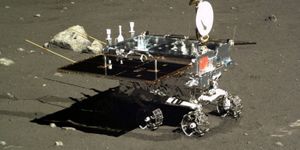What's wastewater disposal have to do with earthquakes?
You might not consider Oklahoma to be a particularly intense earthquake zone, but due to an increase in fracking and wastewater disposal, Oklahoma is currently the most seismically active state in the lower 48 United States. The number of magnitude 3-plus earthquakes shaking the region rose from about one per year before 2011 to more than 900 in 2015.
That’s because during the drilling and extraction processes of oil and gas production, vast quantities of water, sand, and chemicals are pumped into the ground under high pressure in order to, crack the rock and release natural gas and oil. During this process, saltwater is produced as a byproduct. This wastewater is found at nearly every oil and gas extraction well, and most of Oklahoma’s wastewater is saltwater.
But contrary to what you might have heard, fracking isn’t as much of an earthquake catalysis as is wastewater disposal. The Office Of The Secretary Of Energy & Environment explains on its website: “Wastewater disposal wells typically operate for longer durations and inject much more fluid than hydraulic fracturing, making them more likely to induce earthquakes. Enhanced oil recovery injects fluid into rock layers where oil and gas have already been extracted, while wastewater injection often occurs in never-before-touched rocks. Therefore, wastewater injection can raise pressure levels more than enhanced oil recovery, and thus increases the likelihood of induced earthquakes.”
Because Oklahoma is disposing of so much saltwater, this has created unstable geologic regions. “Fluids are basically lubricating existing faults," explains lead author of a new study to be published in Geology, Ryan M. Pollyea. The study suggests that reducing the amount of salt water pumped into the ground for wastewater disposal can decrease the number of small fluid-triggered earthquakes. It doesn’t, however, seem to have an impact on bigger earthquakes.
Pollyea and his colleagues analyzed Oklahoma saltwater disposal wells and seismic activity in an area called the Arbuckle Group, which is a porous geologic formation in north-central Oklahoma that sees a lot of saltwater disposal. The scientists found an obvious connection: "When we plotted the average annual well locations and earthquake epicenters, they moved together in space," up to 125 km, says Pollyea.
Pollyea postulates here for less injected saltwater has impacted small faults: "It's like the traffic on the freeway is still moving, but the smaller arterials are cut off." The key to reducing larger fluid-triggered earthquakes, Pollyea explains, "is to inject less water."
Sources: The Office of the Secretary of Energy and Environment, Science Daily, Geology









